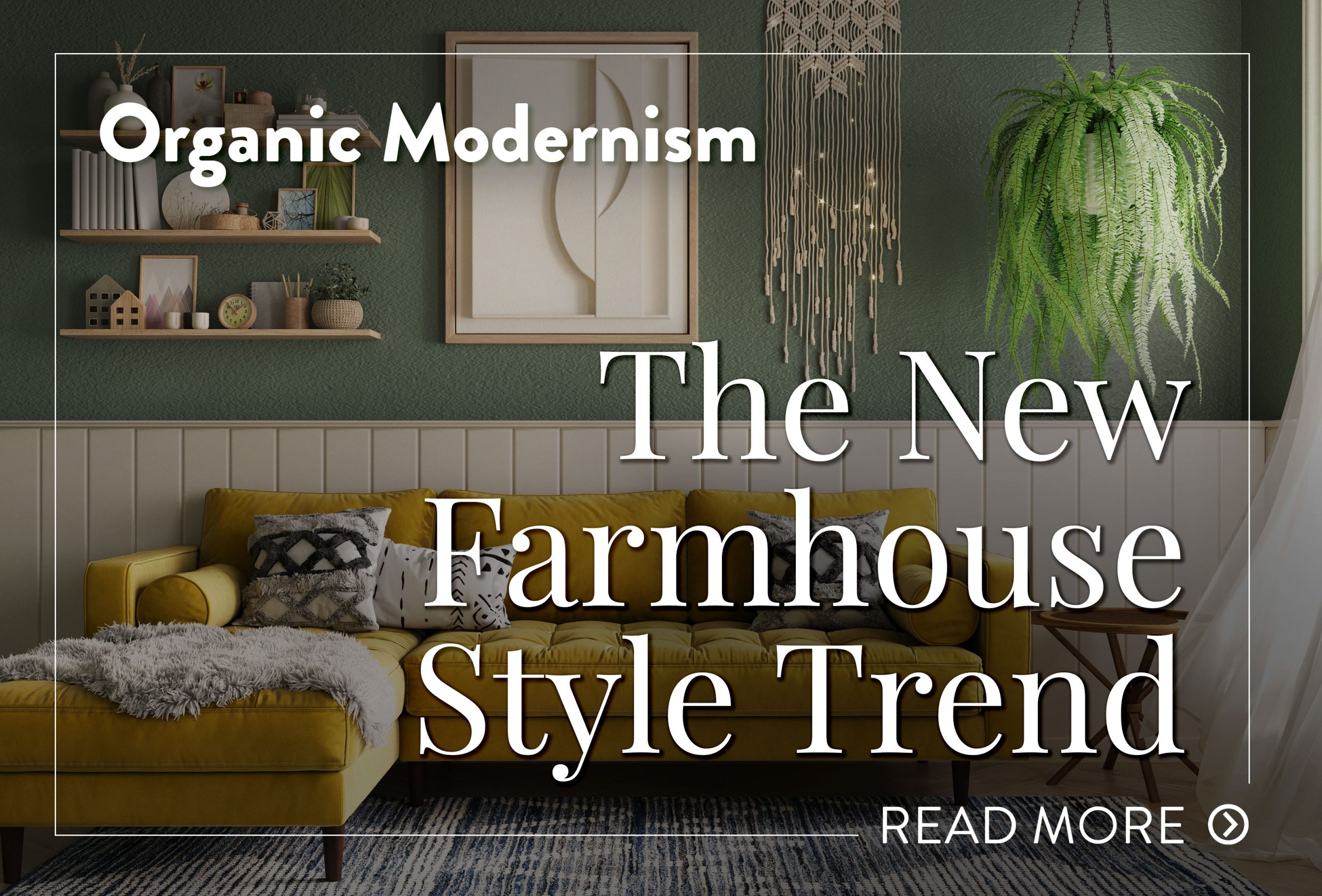Last updated on October 27, 2025
How warm whites and natural textures paired with contemporary materials are replacing rustic farmhouse trends.
Organic modernism – also called modern organic or new farmhouse style – focuses on modern simplicity while incorporating cozy natural elements. Warm hues and organic textures set the perfect stage for geometric shapes and human-made materials to shine.
While organic modernism is infused with earthy colors and textures, creating an inviting setting, the style upgrades and replaces rustic farmhouse trends. Organic modernism brings harmony to a space by thoughtfully balancing a palette of neutral colors and natural fibers with sleek elements signature of contemporary design.
Before going full steam ahead and embracing organic modernism in your home, it’s important to understand the style’s core components and elements. Then, you can put together a space that looks cohesive and feels amazing – attracting buyers.
What is Organic Modernism Style?
Organic modernism style is a hybrid between modernism, minimalism, and earthy decor. It’s an interior design aesthetic that focuses on quality over quantity, forgoing mass-produced decor and busy styles in favor of carefully selected furnishings and a natural, clean look. A mix of geometric shapes and manufactured elements alongside organic materials like real stone, cotton and linen fabrics, and light woods creates a space meant to be both elegant and livable.
Key Elements of Organic Modernism Style
Homeowners should understand the key components and features of organic modernism to best apply the style to their homes. Below are some basic elements of this interior design trend.
Natural elements – Organic modernism focuses on elements and components found in nature — in states as unaltered as possible — i.e., unpolished stone, unstained woods, and raw cotton and linen fabrics to create furniture and furnishings that are earthy and simply elegant. There’s generally no place for polyester and polyester blends in organic modernism decor.
Relaxed minimalism – The new farmhouse look is relaxed while embracing modern warm whites to brighten a space. Ultra-sleek and ultra-minimalist decor generally has no place in an organic modernism room, but rather the aesthetic incorporates pieces and features that are contemporary and warm (and full of character).
Balance – To get the hybrid, balanced look of organic modernism, combine the best of warm and contemporary colors and furnishings. Go too natural and you could easily end up with a rustic or bohemian vibe. Too modern and you’re in industrial territory.
Tips for Decorating in Organic Modernism Style
Go with a neutral color palette – Opt for natural furnishings and furniture in warm whites, beiges, creams, browns, and rusts. These colors are earthy and soothing and can be exceptionally elegant and stylish if used minimally and strategically.
Choose natural textures – Layers of organic textures like cotton and linen help a homeowner achieve a soft and warm look that attracts buyers. Playing with and pairing different natural fabrics creates a warm and cozy backdrop for select modern materials to pop, producing that striking contrast organic modernism is known for.
Incorporate natural stone – Invest in natural stone like marble and soapstone on counters and tabletops and for accessories. Quartz is a great lower-priced alternative that’s attractive and durable when used for kitchen and bathroom countertops.
Bring in light wood – Natural elements like light woods are key to creating an organic modernism aesthetic. Instead of dark options, choose naturally light colored woods or even light stains in certain circumstances.
Play with organic shapes – Clean lines are a key element of the new farmhouse look and a critical component that distinguishes the style from its rustic predecessor. Break up areas in a room that may otherwise look too cottage-y by thoughtfully integrating organic shapes and clean lines on accessories, furniture, and wallpaper.
Are you looking to sell or buy a new home? Let Better Homes & Gardens Real Estate® walk you through the process.


